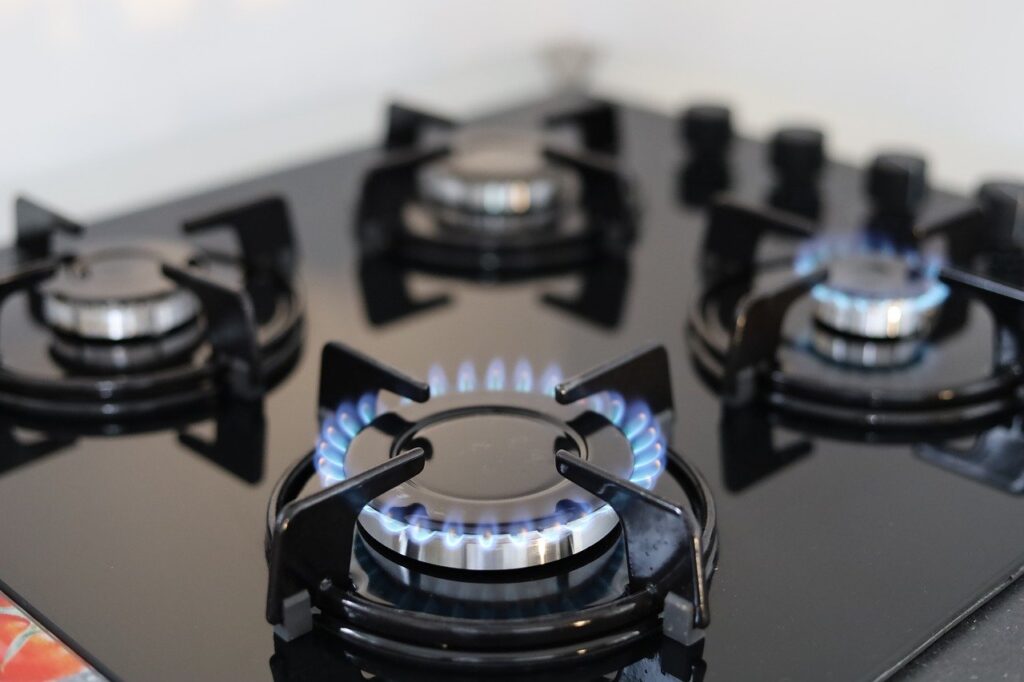Low heat on a stove is 200-300°F for electric and 180-250°F for gas, essential for delicate sauces, slow cooking, and melting without scorching.
What Temp Is Low On A Stove
Picture this: You’re ready to simmer a delicious sauce, but you’re unsure about the perfect temperature. That’s where understanding “low” on a stove comes in handy! Low heat falls within a specific temperature range, depending on whether you’re using a gas or electric stove.
What’s Considered Low Heat?
- Electric Stoves: Low heat generally ranges between 200-300 degrees Fahrenheit (93-149 degrees Celsius).
- Gas Stoves: Gas stovetops offer more precise control. Low heat on a gas stove usually sits slightly lower than electric, around 180-250 degrees Fahrenheit (82-121 degrees Celsius).
Why Does Low Heat Matter?
Mastering low heat is a kitchen superpower! It’s essential for:
- Delicate Sauces: Think creamy sauces or custards that can curdle or burn with too much heat
- Slow Cooking: Low and slow is the secret to tender, flavorful braised meats or stews.
- Gently Melting: Chocolate or butter melt beautifully over low heat without scorching.
- Simmering: Soups and sauces simmer to perfection, developing deep flavors without boiling over.
How to Tell If Your Stove is on Low
Okay, theory’s great, but how about in practice? Here are some ways to gauge if your stovetop is truly on low:
- The Water Test A few drops of water should sizzle gently and evaporate slowly, but not dance wildly.
- The Hand Test: Hold your hand a few inches above the burner. You should feel warmth, but not intense heat.
- The Visual Cue: On a gas stove, a low flame should be small and steady.
Table 1: Tasks Perfect for Low Heat
| Task | Why Low Heat Works |
| Simmering Soups and Sauces | Prevents boiling over and allows flavors to meld |
| Melting Chocolate | Gentle heat prevents scorching or seizing |
| Reducing Liquids | Slow evaporation concentrates flavors |
| Poaching Delicate Foods (like eggs or fish) | Provides a gentle cooking environment |
| Warming Food Without Overcooking | Keeps food heated through without drying out |
Tips for Mastering Low Heat
- Start Slow: Begin with the lowest setting and gradually increase heat if needed.
- Patience is Key: Low heat cooking often takes a bit longer, but the results are worth it.
- Choose the Right Pan: Heavy-bottomed pans distribute heat evenly, preventing hot spots.
- Stir Occasionally: This helps prevent sticking and ensures even cooking.
Troubleshooting: When “Low” Isn’t Low Enough
Even your stove’s lowest setting might be too hot sometimes. Here’s what to do:
- Heat Diffuser: A heat diffuser plate placed between the burner and pan helps tame the heat.
- Double Boiler: This gentle method is perfect for super delicate tasks like melting chocolate.
Identifying Low Heat on Stovetop Dials
Stovetop dials can be a little mysterious, especially when they only have numbers! Here’s a general guide:
- Numbered Dials:
- Most numbered stove dials range from 1-10 or 1-6.
- Low heat usually falls within the 1-3 range.
- Descriptive Dials: Some dials have settings like “Simmer,” “Low,” “Medium,” etc. These make things easier!
Factors That Affect Stove Heat
It’s important to remember that not all stoves are created equal. Here’s what might influence your stove’s temperature settings:
- Stove Type: Gas stoves tend to be more responsive than electric ones, offering more precise temperature control.
- Burner Size: Larger burners typically put out more heat, even on low settings.
- Pan Material: Cast iron pans retain heat extremely well, so they may require even lower temperatures than stainless steel pans.
Table 2: Comparing Electric and Gas Stove Heat Levels
| Heat Setting | Typical Electric Temp Range (°F) | Typical Gas Temp Range (°F) | Best Used For |
| Low | 200-300 | 180-250 | Simmering, melting, gentle cooking |
| Medium-low | 300-350 | 250-325 | Sautéing vegetables, frying eggs |
| Medium | 350-400 | 325-400 | General cooking, searing smaller cuts of meat |
| Medium-High | 400-450 | 400- 475 | Searing large cuts of meat, stir-frying |
| High | 450+ | 475+ | Boiling water quickly, deep-frying |
Beyond Low: Even Gentler Heat Techniques
Sometimes, even your stove’s lowest setting isn’t delicate enough. Here are some additional techniques:
- Oven Warming: Use your oven’s “warm” setting (usually around 170-200°F) for keeping food warm or gently melting ingredients.
- Bain Marie (Water Bath): This involves placing a bowl over a pot of simmering water to create indirect, super-gentle heat. Perfect for custards or tempering chocolate.
Practice Makes Perfect
The best way to master low heat is to experiment! Here are some low-heat friendly recipes to try:
- Creamy Sauces: Like Alfredo or béchamel
- Homemade Custard: A delicious and delicate dessert
- Slow-Cooker Recipes: Many braises and stews are perfect for adapting to low stovetop heat.
- Poached Eggs: Gentle cooking gives them a perfect silky texture.
The Bottom Line- What Temp Is Low On A Stove?
So, what temp is low on a stove? It varies slightly depending on your stove type, but generally, it falls between 200-300°F for electric and 180-250°F for gas. Mastering low heat unlocks a world of delicious culinary possibilities!
